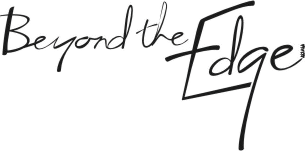Solutions-Focus to the rescue
I’m grateful to my collagues Sharon McGann and Paul Jackson for introducing me to the solutions-focus (SF) approach – as yet again, SF has saved the day!
In my last post I talked about some of the challenges of facilitating in Armenia – a post-Communist country where new ways of engaging the community and taking an active citizenship approach are still being explored. I helped deliver a week of training/facilitating where the participants took part in a couple of community meetings concerned with improving services at a local health clinic and primary school. In both cases the community defaulted to the known paradigm of identifying problems and saying nothing could be done without money and/or government intervention.
As this approach is centred around empowering local communities to take responsibility for local reforms – the end result was a bit disappointing, although somewhat predictable.
The participants in the training were quick to ‘blame’ the process saying that it just wasn’t suitable for Armenia. Maybe. I thought I’d try something.
After a very interesting presentations and discussion about governance, citizenship and social accountability in the Armenian context – and all the ramifications that they entail – I introduced a solutions-focused worksheet for participants to consider their next steps.
This was all done from memory as this wasn’t a planned part of the workshop. And that’s one of the benefits of the SF approach – it’s straightforward, robust and easy to remember.
I prepared a flip chart for each working group. In the centre was a circle that asked: “What is a problem that you are facing in relation to governance, citizenship and social accountability – AND what would be the benefits/payoff of solving this problem?”
At the top of the sheet was Future Perfect: “Imagine you went to sleep tonight and while you were asleep a miracle occurred and this problem was solved. What would you see people doing differently? What would they be saying?”
Then to the left of the ‘problem’ I introduced the ‘scale’ and asked them to identify on a scale of 1 – 10 (where 10 is Future Perfect and 1 is the opposite of that) to identify where they were at at the moment. On the other side of the ‘problem’ I asked them about resources: “What’s helping you achieve this? What skills and resources do you already have?”
And finally, at the bottom of the sheet I asked them: “What practical steps could you take to move one step along the scale?”
Groups took away the prepared flip charts – after a whole group, very fast demo of how to use it – and came back half an hour later with some extraordinary work – focusing on what could be done, rather than what could not be done – and with quite a change of perspective and outlook.
SF didn’t change these people straight away – but it certainly opened a door and gave them a way to look at their many challenges in a new and different way that just may be more useful.

Great to hear the success story Viv – the phrase “trust the process” is a bit cliche, but when it comes to Solutions Focussed it does seem to be valid.
Cheers, Sharon
[…] I love about SF is its simplicity and adaptability. You can read here how it got me out of trouble in Armenia, and I’ve also used it as a way of convergence in an […]